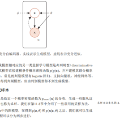Recent text-to-image diffusion models leverage cross-attention layers, which have been effectively utilized to enhance a range of visual generative tasks. However, our understanding of cross-attention layers remains somewhat limited. In this study, we introduce a mechanistic interpretability approach for diffusion models by constructing Head Relevance Vectors (HRVs) that align with human-specified visual concepts. An HRV for a given visual concept has a length equal to the total number of cross-attention heads, with each element representing the importance of the corresponding head for the given visual concept. To validate HRVs as interpretable features, we develop an ordered weakening analysis that demonstrates their effectiveness. Furthermore, we propose concept strengthening and concept adjusting methods and apply them to enhance three visual generative tasks. Our results show that HRVs can reduce misinterpretations of polysemous words in image generation, successfully modify five challenging attributes in image editing, and mitigate catastrophic neglect in multi-concept generation. Overall, our work provides an advancement in understanding cross-attention layers and introduces new approaches for fine-controlling these layers at the head level.
翻译:暂无翻译




